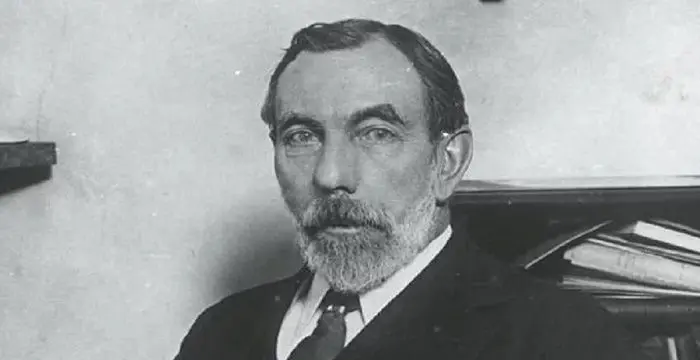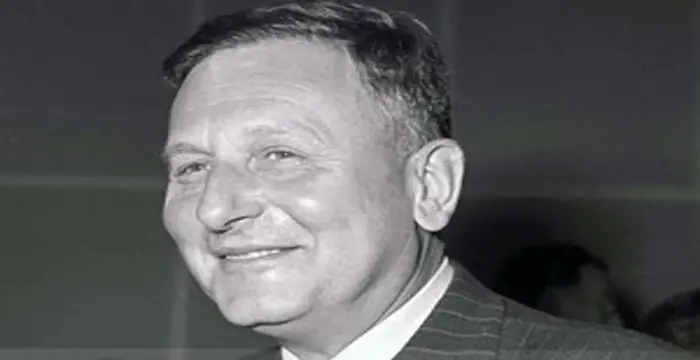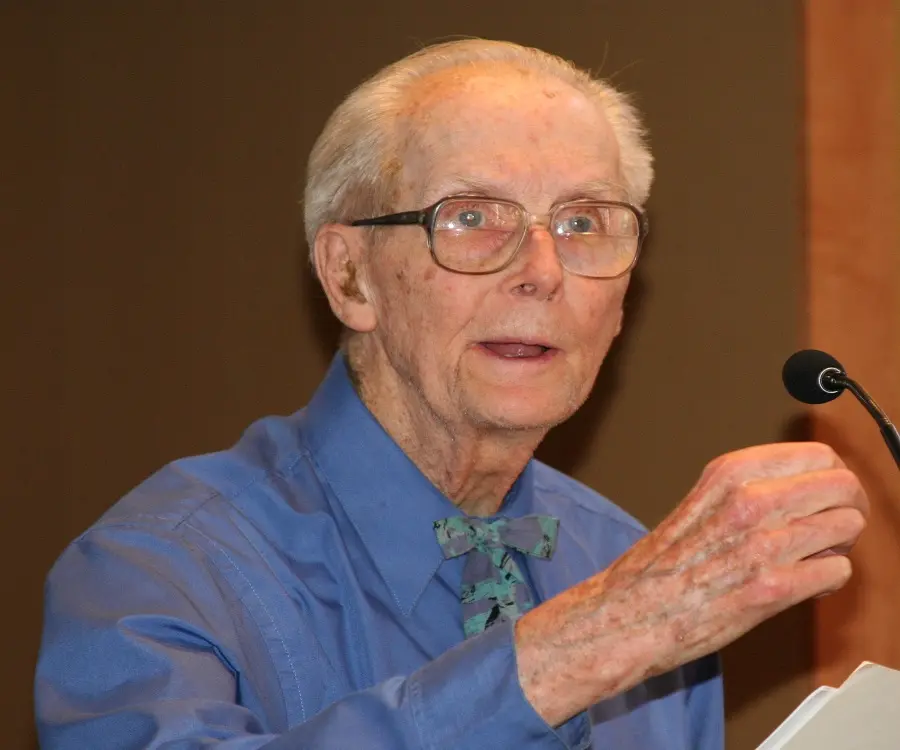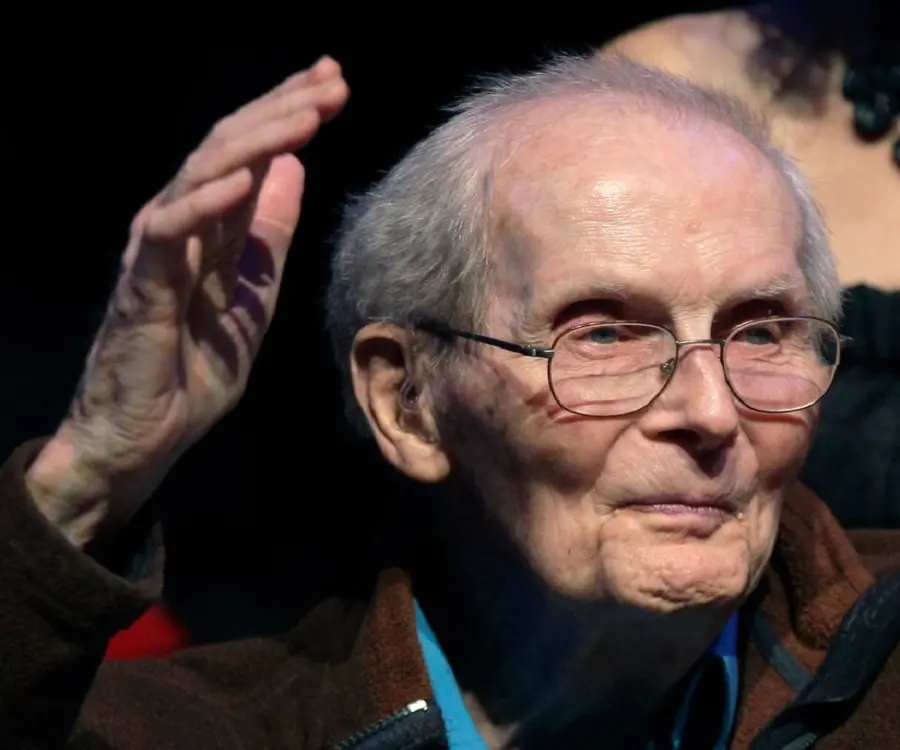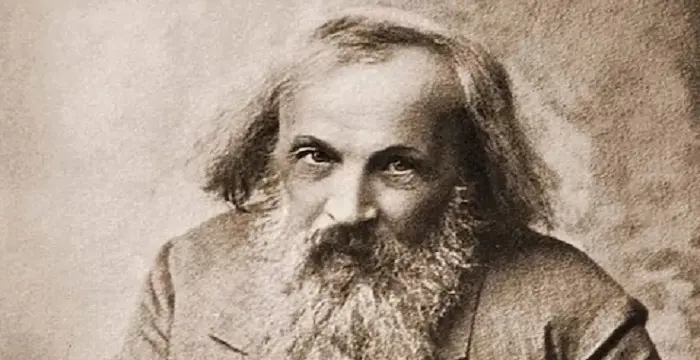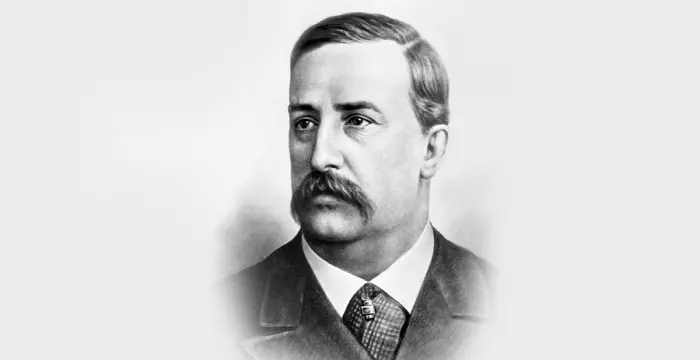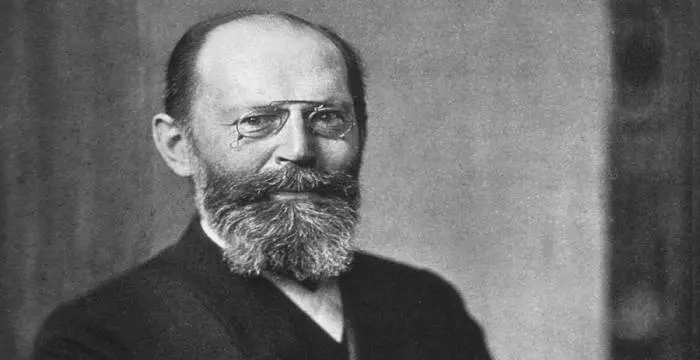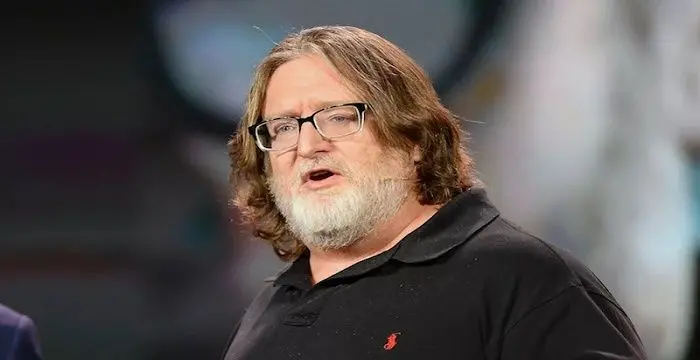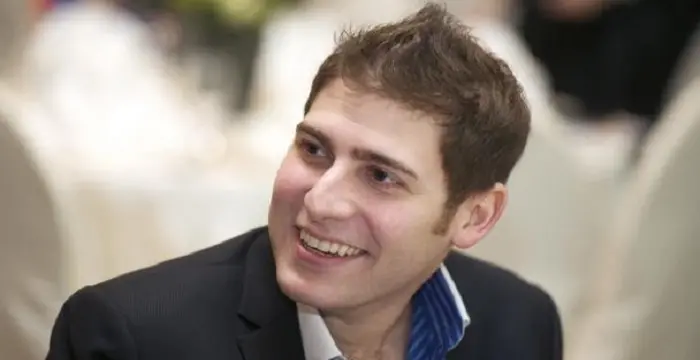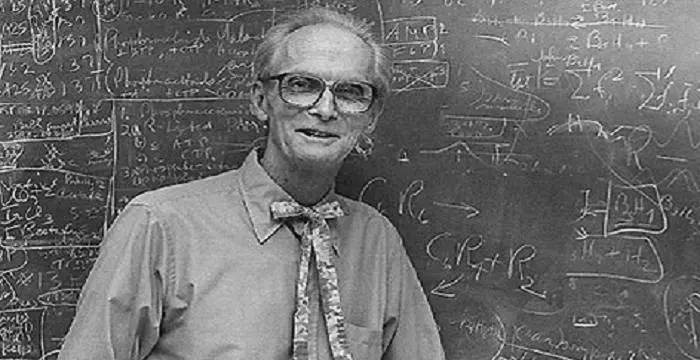
William Lipscomb - Inorganic Chemists, Career and Facts
William Lipscomb's Personal Details
William Lipscomb was an American chemist who won the Nobel Prize in Chemistry in 1976
| Information | Detail |
|---|---|
| Birthday | December 9, 1919 |
| Died on | April 14, 2011 |
| Nationality | American |
| Famous | Scientists, Chemists, Inorganic Chemists, Organic Chemists |
| Birth Place | Cleveland, Ohio, United States |
| Gender | Male |
| Sun Sign | Sagittarius |
| Born in | Cleveland, Ohio, United States |
| Famous as | Chemist |
| Died at Age | 91 |
// Famous Inorganic Chemists
William Ramsay
William Ramsay was a Nobel Prize winning chemist who discovered the ‘noble gases’. To know more about his childhood, profile, timeline and career read on
Alfred Werner
Alfred Werner was a Swiss chemist and the founder of coordination chemistry. This biography of Werner provides detailed information about his childhood, life, research, work, achievements and timeline.
Paul Hermann Müller
Paul Hermann Muller was a Swiss Chemist who won the Nobel Prize in Physiology or Medicine for his discovery of a form of DDT. This biography profiles his childhood, life, research, achievements and timeline.
William Lipscomb's photo
Who is William Lipscomb?
William Lipscomb was an American inorganic and organic chemist who won the Nobel Prize in Chemistry in 1976. Renowned for his works in the fields of nuclear magnetic resonance, theoretical chemistry, boron chemistry, and biochemistry, he was awarded the Nobel Prize for his research on the structure of molecules and on chemical bonding. A protégé of the two-time Nobel laureate Linus C. Pauling, he continued his mentor’s work at the California Institute of Technology (Caltech) in the 1940s. Growing up in a home where independent thinking and intellectual pursuits were encouraged, he became fascinated with chemistry as a young boy. He received a small Gilbert chemistry set when he was 12 and he was hooked. He grew up to receive his Bachelor of Science degree in Chemistry from the University of Kentucky following which he went to the California Institute of Technology (Caltech) for his doctorate. He was greatly influenced by his mentor Linus C. Pauling and eventually ventured into an academic career. He joined the faculty of the University of Minnesota in 1946, and moved to Harvard University after 13 years. He also served on the board of directors of Dow Chemical. Known for his multiple talents, he was a classical clarinetist who performed in chamber groups.
// Famous Organic Chemists
Dmitri Mendeleev
Dmitri Mendeleev was a Russian chemist who is best known for his discovery of the periodic law. Check out this biography to know about his childhood, life, achievements, works & timeline
Aleksandr Borodin
Aleksandr Borodin was a prodigal Russian music composer and scientist. This biography gives detailed information about his childhood, life, works, achievements and timeline.
Hermann Emil Fischer
Emil Fischer was a Nobel Prize winning chemist from Germany who is known for inventing the ‘Fischer Projection’ method. To know more about his childhood, career, profile and timeline read on
Childhood & Early Life
William Nunn Lipscomb, Jr. was born on December 9, 1919, in Cleveland, Ohio, US. His father was a physician while his mother taught music.
He was interested in scientific pursuits from a young age. He collected animals, insects, and rocks, and regularly visited the Observatory of the University of Kentucky. A turning point in his young life was when he received a small Gilbert chemistry set at the age of 12. Thus began his fascination with chemistry which led him to perform many experiments, including making his own fireworks.
He studied chemistry at the University of Kentucky and received his Bachelor of Science degree in 1941. He proceeded to the California Institute of Technology (Caltech) where he was offered a teaching assistantship in Physics at $20 per month.
Initially, he intended to study theoretical quantum mechanics with Prof. W. V. Houston in the Physics Department but changed his mind after one semester. He switched to the Chemistry Department under the influence of Prof. Linus Pauling in 1942 and became involved in research and development related to the ongoing World War II. He mostly worked with nitroglycerin–nitrocellulose propellants. In 1946, he was awarded his Doctor of Philosophy degree in Chemistry.
Career
William Lipscomb embarked on an academic career by joining the University of Minnesota in 1946. He worked there for 13 years before moving to Harvard University as a professor of chemistry in 1959. There he also served as chairman of the department of chemistry from 1962 to 1965.
He continued his research throughout his teaching career and was awarded the Abbott and James Lawrence Professorship in 1971 at Harvard. He became a professor emeritus in 1990. From 1982 to 1990, he also served on the board of directors of Dow Chemical.
His research majorly involved developing X-ray diffraction techniques. Working in this field, Lipscomb and his associates were able to map the molecular structures of numerous boranes and their derivatives. Boranes are compounds of boron and hydrogen.
He dedicated several years of his career to the study of boranes. While some of his more ambitious experiments in the field failed to yield the desired results, he was able to perform significant works in boron chemistry and achieved considerable success in his research involving boron bonding.
He deduced the molecular structure of boranes using X-ray crystallography and developed theories to explain their bonds. Using the same methods, he was also able to deduce the structure of carboranes (compounds of carbon, boron, and hydrogen).
His team gave a proposed mechanism of the three-center two-electron bond. While the group did not discover the three-center two-electron bond, they used already existing formulas to understand the quantum mechanical details of such bonds.
During the later part of his career, he focused on the atomic structure of proteins, particularly how enzymes work. His group used x-ray diffraction to solve the three-dimensional structure of these proteins to atomic resolution. His group also contributed to an understanding of concanavalin A, glucagon, and carbonic anhydrase.
Major Works
Working along with his associates, William Lipscomb deduced the molecular structure of boranes (compounds of boron and hydrogen) using X-ray crystallography which later proved useful in many chemical applications. The team’s research showed how a pair of electrons could be shared by three atoms and led to the proposed mechanism of the three-center two-electron bond.
Awards & Achievements
He received the Bausch and Lomb honorary science award in 1937.
Lipscomb was made a Guggenheim Fellow in 1954 and a Fellow of the American Academy of Arts and Sciences in 1960.
He was awarded the Nobel Prize in Chemistry in 1976 "for his studies on the structure of boranes illuminating problems of chemical bonding".
He was also a member of the National Academy of Sciences U.S.A. and of the American Academy of Arts and Sciences, and a foreign member of the Royal Netherlands Academy of Sciences and Letters.
Personal Life & Legacy
His first marriage to Mary Adele Sargent lasted from 1944 to 1983. They couple had three children, of whom one died shortly after birth.
His second marriage in 1983 was to Jean Evans with whom he adopted a daughter.
He died on April 14, 2011, at the age of 91.
// Famous Chemists
Henry Cavendish
Henry Cavendish was a theoretical chemist and physicist, renowned for discovery of hydrogen and calculation of the mass of earth. To know more about his childhood, profile, timeline and career read on
Walter Kohn
Nobel Laureate Walter Kohn was an Austrian-born American theoretical chemist and physicist. Check out this biography to know about his childhood, life, achievements, works & timeline.
Jabir Ibn Hayyan
Jabir Ibn Hayyan was a medieval era polymath. Check out this biography to know about his life, works and achievements.
William Lipscomb's awards
| Year | Name | Award |
|---|---|---|
Other | ||
| 0 | 1976 - Nobel Prize in Chemistry | |
| 0 | 1954 - Guggenheim Fellowship for Natural Sciences | |
| 0 | US & Canada | |
William Lipscomb biography timelines
- // 9th Dec 1919William Nunn Lipscomb, Jr. was born on December 9, 1919, in Cleveland, Ohio, US. His father was a physician while his mother taught music.
- // 1937He received the Bausch and Lomb honorary science award in 1937.
- // 1941He studied chemistry at the University of Kentucky and received his Bachelor of Science degree in 1941. He proceeded to the California Institute of Technology (Caltech) where he was offered a teaching assistantship in Physics at $20 per month.
- // 1942 To 1946Initially, he intended to study theoretical quantum mechanics with Prof. W. V. Houston in the Physics Department but changed his mind after one semester. He switched to the Chemistry Department under the influence of Prof. Linus Pauling in 1942 and became involved in research and development related to the ongoing World War II. He mostly worked with nitroglycerin–nitrocellulose propellants. In 1946, he was awarded his Doctor of Philosophy degree in Chemistry.
- // 1944 To 1983His first marriage to Mary Adele Sargent lasted from 1944 to 1983. They couple had three children, of whom one died shortly after birth.
- // 1954 To 1960Lipscomb was made a Guggenheim Fellow in 1954 and a Fellow of the American Academy of Arts and Sciences in 1960.
- // 1976He was awarded the Nobel Prize in Chemistry in 1976 "for his studies on the structure of boranes illuminating problems of chemical bonding".
- // 1983His second marriage in 1983 was to Jean Evans with whom he adopted a daughter.
- // 14th Apr 2011He died on April 14, 2011, at the age of 91.
// Famous Scientists
Juliane Koepcke
Juliane Koepcke is a German-Peruvian biologist, who was the lone survivor among the 92 passengers and crew of the ill-fated LANSA Flight 508 that crashed in the Peruvian rainforest on 24 December 1971. Know more about her life in this biography.
Henry Cavendish
Henry Cavendish was a theoretical chemist and physicist, renowned for discovery of hydrogen and calculation of the mass of earth. To know more about his childhood, profile, timeline and career read on
Konstantin Tsiolkovsky
Konstantin Tsiolkovsky was a Russian rocket scientist and a pioneer of astronautics. This biography provides detailed information about his childhood, family, personal life, career, achievements, etc.
Gabe Newell
Gabe Newell is an American computer programmer and businessman, best known as the co-founder of ‘Valve Corporation.’ This biography provides detailed information about his childhood, family, personal life, career, etc.
Grigori Perelman
Grigori Perelman is a Russian mathematician who is best known for his contributions to Riemannian geometry and geometric topology. Check out this biography to know about his childhood, family life, achievements and fun facts about him.
Eduardo Saverin
Eduardo Luiz Saverin is a Brazilian internet entrepreneur and investor. This biography profiles his childhood, life, career, achievements, and timeline
William Lipscomb's FAQ
What is William Lipscomb birthday?
William Lipscomb was born at 1919-12-09
When was William Lipscomb died?
William Lipscomb was died at 2011-04-14
Which age was William Lipscomb died?
William Lipscomb was died at age 91
Where is William Lipscomb's birth place?
William Lipscomb was born in Cleveland, Ohio, United States
What is William Lipscomb nationalities?
William Lipscomb's nationalities is American
What is William Lipscomb's sun sign?
William Lipscomb is Sagittarius
How famous is William Lipscomb?
William Lipscomb is famouse as Chemist
